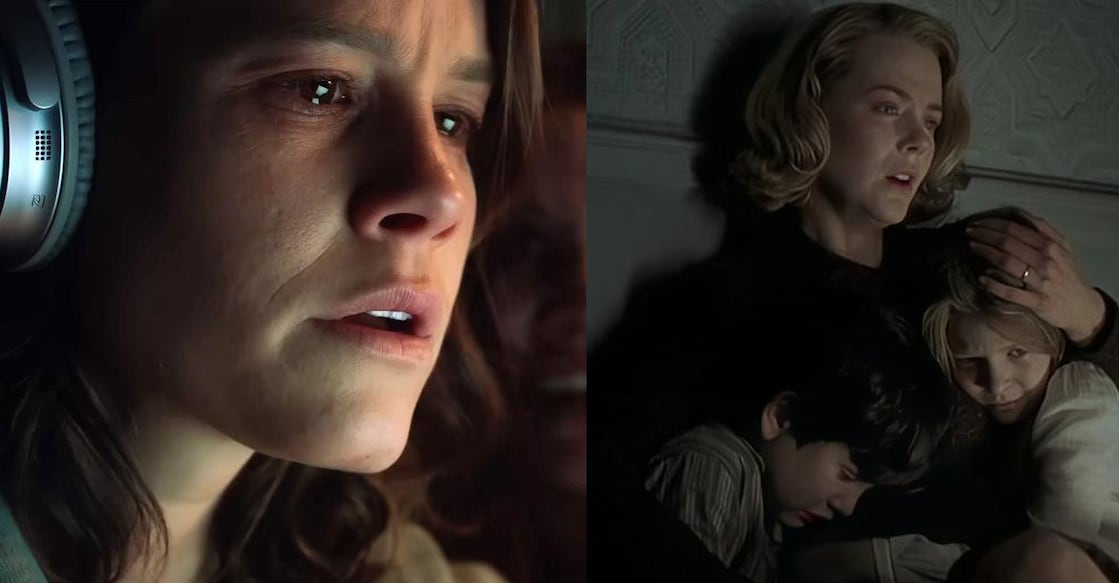Why the scariest horrors are the ones inside our heads | The Haunted Column

Mail This Article
Horror has long been a genre that plays on our deepest fears, but some of the most memorable stories go beyond jump scares and monsters. They tap into the very real psychological struggles that haunt us, shining a light on mental health issues through supernatural metaphors and emotional storytelling.
Here, we examine four horror films and series that use their narratives to explore grief, denial, post traumatic stress disorder, and family trauma, showing how the scariest things often live inside our minds.
The Babadook: Grief and Depression
Jennifer Kent’s 'The Babadook' isn’t just a horror movie about a creepy monster lurking in the house, it’s a deeply personal story about grief and how it refuses to let go. At first glance, it’s about Amelia, a widowed mom, and her son Samuel, dealing with this terrifying figure called the Babadook. But the monster is really a metaphor for the heavy, unresolved sorrow Amelia carries after losing her husband.

Amelia is exhausted, trying her best to hold things together, but the sadness clings to her like a shadow. Samuel’s acting out isn’t just bad behaviour, it’s a reflection of the pain and confusion he feels living in that grief-filled space. The Babadook’s growing presence perfectly captures the rising tension between them, like grief itself becoming harder and harder to ignore.
As Amelia’s mind starts to slip, the movie shows how grief can feel like it’s taking over completely, pushing her toward dark, dangerous places. But in the end, the film isn’t about being defeated by pain. That haunting final scene, where Amelia feeds the Babadook down in the basement, is powerful; it’s a reminder that grief doesn’t vanish. Instead, when we face it head-on, it stops controlling us.
Habiba Hussain TK, Clinical Psychologist: “It starts as a stress reaction, but can escalate into a neurotic or even psychotic condition. Neurotic reactions often stem from a sudden traumatic experience, something that triggers intense anxiety or depression. In such circumstances, this kind of reaction is understandable. But if it isn’t properly addressed or treated, it can worsen and potentially lead to a psychotic state, where the individual loses touch with reality, like how Amelia towards the end, starts losing her grip on reality. Sometimes, the person’s environment also plays a major role in pushing them further into this state. This kind of progression is, unfortunately, quite common.
As for how it affects children, take Samuel in the movie, for example. He’s portrayed as a deeply disturbed child. That kind of behaviour can often be traced back to the parents. If a child is neglected from birth or doesn’t receive a nurturing upbringing, it can lead to emotional damage and behavioural problems later on, exactly like what we see in Samuel’s case.”
Smile: Hallucinations and PTSD
'Smile' uses supernatural horror to dive into trauma and psychological breakdown. The film follows Rose Cotter (Sosie Bacon), a therapist who witnesses a terrifying suicide that triggers a series of disturbing hallucinations. She begins seeing a menacing entity, always appearing as different people but with the same unnerving smile.

This curse spreads like trauma itself, from patient to therapist, pulling Rose into a terrifying spiral where her grasp on reality slips away. The entity becomes a symbol of her PTSD and growing isolation. What makes 'Smile' especially unsettling is Rose’s increasing loneliness: no one believes her, and the hallucinations push her further away from those around her. The film captures how mental illness can consume a person internally, especially when their pain goes unseen or misunderstood.
Psychologist’s insight: “Hallucinations can feel incredibly real to the person experiencing them. While we, as outsiders, might struggle to understand or believe what they’re describing, because it doesn’t match our reality, for them, it is very much the truth. If someone feels they’re being followed or senses a presence beside them, no amount of reasoning will change what they’re experiencing in that moment.
In 'Smile', Rose is a doctor, someone grounded in science and reality. So, for her to start hallucinating, it suggests she experienced something deeply traumatic that triggered it. In this case, it was witnessing a violent death. And history shows us that similar psychological breaks have occurred in people after intense trauma.”
The Others: Denial and Delusion
Denial is the emotional core of 'The Others', giving the film its quiet heartbreak beneath all the ghostly tension. Grace (Nicole Kidman) clings to the life she once had, refusing to believe her daughter Anne’s stories about strange occurrences in their home. Even as unexplainable things escalate, Grace insists there must be logical reasons.
Her denial is so strong that even when she discovers the graves of the servants, she tries to make sense of the situation without facing the painful truth. The film’s twist; that Grace and her children are actually dead, reveals how denial can be a defence mechanism against unbearable grief and guilt. The Others shows us how refusing to accept reality can trap us in a cycle of torment.

Clinical perspective: “Delusions caused by denial often stem from psychotic breakdowns. For instance, some individuals might suddenly believe they possess extraordinary strength, claim to be someone else, or even say they are Jesus Christ. These are early signs of psychosis. Without proper care, these delusions can persist and worsen over time.
Delusion is defined as an unshakable false belief, and we see this clearly in 'The Others'. Nicole Kidman’s character truly believes that ‘the others’ in the house are trying to harm her children. Her reality becomes shaped entirely by that belief, everything she does, she does through the lens of that delusion.
Is there a way out? Yes. With proper medication and psychotherapy, these symptoms can be managed. This is where Expressed Emotion (EE) becomes crucial. It refers to the tone, attitude, and emotional climate from family or caregivers. A supportive, understanding environment can make a big difference in recovery, while constant criticism or emotional intensity can make things worse.”
The Haunting of Hill House: PTSD and Family Trauma
More than just a ghost story, 'The Haunting of Hill House' is a deeply emotional portrait of family trauma and how it reverberates across generations. The Crain family moves into Hill House with hopes of a fresh start but instead are confronted with terrifying supernatural events that leave lasting scars.
The series shifts between past and present, revealing how the childhood horrors continue to shape each sibling’s adult life. Whether it’s Luke’s addiction, Theo’s emotional walls, Shirley’s control issues, or Nell’s isolation, each character struggles with trauma that’s as real and painful as any ghost.

The heartbreaking revelation of Nell’s connection to the Bent-Neck Lady is a reminder that trauma often comes full circle, haunting us until it’s faced. This series shows that sometimes, the most frightening ghosts are the memories we carry and the silence we keep.
Expert insight: “Albert Bandura’s Social Learning Theory explains how people learn behaviours through observation, imitation, and modelling. This idea fits well with The Haunting of Hill House, where we see how deeply children absorb the behaviours and emotional patterns of the adults around them. Children often look up to their parents as role models, even without direct instruction, they observe, internalise, and carry forward what they see.

In Hill House, the trauma each family member experiences doesn't just vanish; it lingers, shaping who they become. As adults, each of the Crain children deals with their own version of that inherited pain, which in Nell’s case, tragically contributes to her death. Hugh, the father, believes he's protecting his kids by keeping certain truths from them and trying to shield them from the horrors of the house. But in doing so, he overlooks how much of that trauma still gets passed down.
The show powerfully reflects how children carry the emotional weight of their families, often without fully understanding it until much later.”
These four horror tales illustrate a vital truth: sometimes the most frightening monsters live within us. Through supernatural metaphors, they illuminate real struggles with grief, denial, PTSD, and trauma, mental health battles that shape the way we see and interact with the world.
With expert clinical insights, these stories don’t just entertain; they educate, destigmatise, and foster empathy for those silently wrestling with their inner demons.


